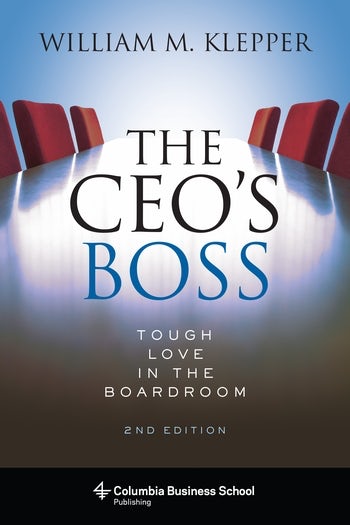An Inner Voice for Those Who Change the World

“You have choices. As a leader making decisions that impact your business, and as a person making decisions that impact your life, you don’t have to be a prisoner of the default and (nearly) automatic ways in which your brain attends to information. You don’t have to take the road everyone else travels. You can learn to guide your own attention and thinking, to make decisions that stand the test of time. Your first choice, fortunately, is an easy one—read The Wise Advocate.”
~Heidi Grant, PhD, chief science officer at the NeuroLeadership Institute, and author of Nine Things Successful People Do Differently
It’s the last day of our month-long feature of our Columbia Business School Publishing (CBS) imprint, but don’t despair. We’ll have more guest post and leadership tips from authors in this imprint throughout the year. For now, grab a cup of coffee and settle in for this piece about cultivating a voice of strategic leadership within yourself from co-authors of The Wise Advocate: The Inner Voice of Strategic Leadership, Jeffrey Schwartz, Art Kleiner, and Josie Thomson.
Remember to enter or drawing by midnight tonight for a chance to win a copy of The Wise Advocate or any one title in the CBS imprint.
• • • • • •
Nearly all the writers on leadership agree that there’s something special about people who have great influence. They have a kind of voice that few others have: that leads them to frequently take a stand. It’s not always on principle, because they are not necessarily rigid; but it’s always based on a perspective that sits solidly with them, as if they had a regular mental adviser that they consult, within themselves, helping them avoid pitfalls and remain consistent.
You can undoubtedly think of many examples of such leaders, well-known and in private life. One of the most compelling examples is a familiar one: Abraham Lincoln. As Doris Kearns Goodwin put it In her book Team of Rivals, the newly elected president’s “decision to incorporate his eminent rivals into his… cabinet was evidence of a profound self-confidence and a first indication of what would prove to others a most unexpected greatness.” Lincoln made a point not just of thinking about pleasing his constituents, who had elected him: he thought deeply about what the people around him were thinking and why. In doing so, he brought together people like Secretary of State William H. Seward, Secretary of the Treasury Salmon P. Chase, and Attorney General Edward Bates – all former political opponents who became devoted supporters and colleagues.
The type of sustained, empathetic reflection about others that Lincoln was famous for is called “mentalizing” by psychologists. It’s one of several practices that, over time, build the capacity for strategic leadership. When you mentalize, you don’t spend your time thinking about what other people want, what you want, or how to make sure people (including you) get what they want. That’s the path to expedience. Instead, you look at people as they are, and think about why they do what they do and what they’re likely to do next.
“When you mentalize, … you look at people as they are, and think about why they do what they do and what they’re likely to do next.”
The other practices involve executive function and applied mindfulness. Executive function is a focus on a future orientation. It involves cognitive flexibility (looking at a situation from multiple perspectives), inhibitory control (being able to experience impulses but choose not to act on them), and a strong working memory (which gives you more capacity to deal with complexity). Applied mindfulness is the ability to adopt a state of mind in which you become aware of your own thoughts, and use that awareness to develop your mental life.
When you combine these practices on a regular basis, you start to mentalize about yourself: to apply third-person perspective to first-person experience. Do this regularly, and it becomes more like second nature. This type of activity has been done by effective leaders throughout human history, and it’s often been compared to calling on a presence in your own mind: a wise advocate who looks at you as impartially as an observer would, but who is also deeply committed to your well-being and wholesome success. Bring that voice to the surface in your own mind, time and time again, and you start to take on that kind of wise advocate role in the organization around you.
“Applied mindfulness is the ability to adopt a state of mind in which you become aware of your own thoughts, and use that awareness to develop your mental life.”
In our book The Wise Advocate, we tell the story of a number of business people who have done exactly that. They’ve overcome the deceptive messages in their own minds, and then helped to overcome the organizational biases and deceptions that can hold back a company’s culture. More to the point, they have now helped organizations realize aspirations and goals that never seemed possible before. These are stories of people who never felt they could have influence, but did – or who knew they were influential, but rose to the occasion when they needed to use that influence for a truly noble purpose.
Indeed, if you cultivate the voice of strategic leadership within yourself, you build your own capability to evoke that voice, to speak with that voice, in the organizations around you. It doesn’t happen all at once: you return to the “High Ground” of the mind and brain, day after day, with each decision you make. At first it seems like a change of habit – indeed, it is one – but over time, it can become second nature. The bottom line: when cultivated with intention and repetition, this inner voice can help you become the kind of leader who changes the world.
For more about wise advocacy and strategic leadership visit www.wiseadvoc8.com.






